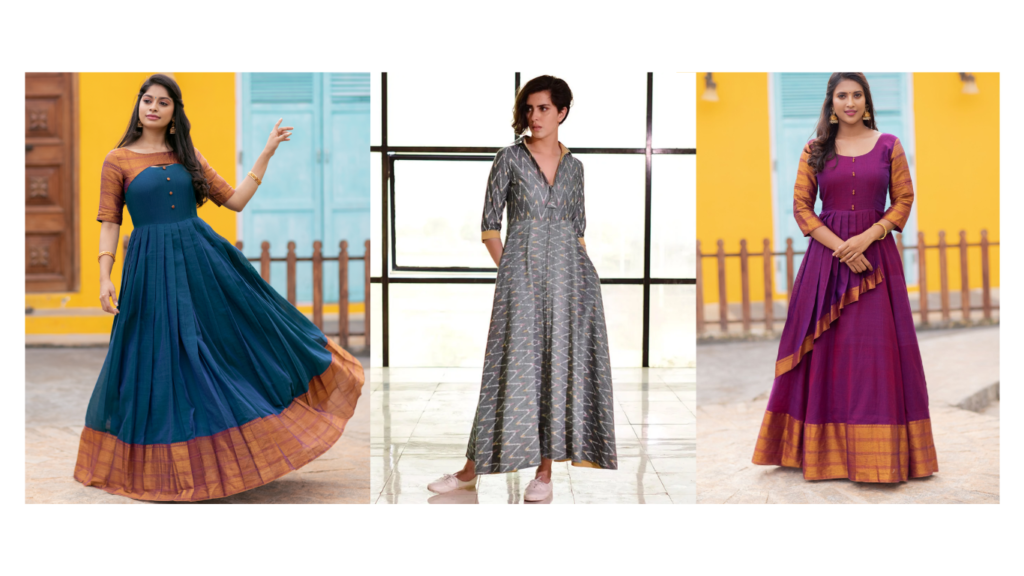Handloom Dresses in India – The term “Handloom” refers to the method of weaving a piece of cloth on a loom, primarily with the aid of a hand, but sometimes with the assistance of foot power as well, or both. Since the Indus Valley civilization, craftsmen in India have been producing and weaving on looms, and Indian handlooms were in demand in various countries such as Egypt, Rome, and China hundreds of years ago.
Handloom tradition
When India was struggling for independence, Gandhiji launched the Swadeshi movement to not only promote hand-woven cloth in India, but also to convey a powerful message of self-reliance to the British Raj. The Swadeshi movement opened the ground for handloom evolution in India.
Despite the widespread usage of power looms today, handlooms are making a cautious but steady comeback and riding the wave with pride. The Indian government is promoting handloom artists by enacting a number of laws that promote the resurrection of handlooms.
Let’s take a quick look at how handlooms are made.
It’s time-consuming, dexterous, and made in India! Handcrafted fabrics are back in style and being worn by people in rural and urban India, from fashion runways to malls and plain everyday stores. The cloth has become a type of unifier. But do you understand how the handloom industry works? Whether you’re making a simple saree or a stylish kurti, the procedure requires expertise, patience, and imagination.
We’ve outlined the steps for you. [Handloom Dresses in India]
#1 – Choosing a raw material
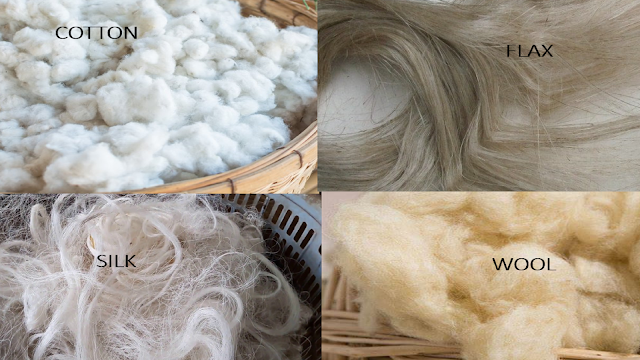
For weaving, the artists select raw materials such as silk, wool, cotton, or linen—various styles of weave require different types of raw materials. For example, mulberry silk is used to weave Chanderi cloth, and wool is used to weave Kashmiri shawls.
#2 – Making yarn from raw materials
Spinning transforms textile fibres and filaments into yarn at this stage.
#2-A – Hand spinning:
Spinning is a difficult process. The quality of the yarn is determined by the weaver’s skills and the staple length of the fibre. Cotton handloom manufacturers mostly utilise handspun yarn to turn cotton fibres and filaments into longer threads. [Handloom Dresses in India]
#2-B – Mill Spinning:
Mill spun or mechanically spun yarns are the most often used yarns these days. Massive spinning mills produce massive amounts of yarn by turning filaments into longer threads.
#3 – Fabric coloration
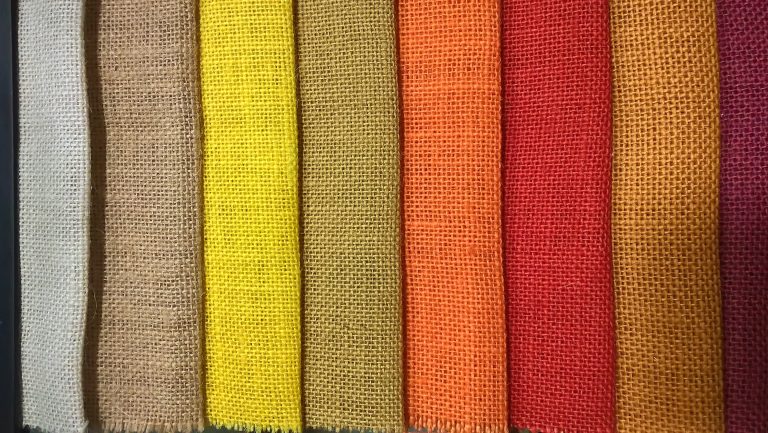
The dyeing or colouring of the yarn is the next step in the handloom manufacturing process. There are three types of yarn dyeing.
#3-A Natural dye:
The yarn is dyed using natural elements such as flower petals, leaves, minerals, and so on. Natural colours include vegetable dyes as well.
#3-B Indigo dye:
Indigo dyeing is one of the country’s oldest dying techniques, employing plant extracts from the Indigofera genus. Because of its all-natural constituents, it is popular in a variety of industries. [Handloom Dresses in India]
#3-C Chemical dye:
A chemical dye, often known as a synthetic dye, is a dye that uses a non-natural substance to colour the yarn. To compete, handloom makers have begun to use chemical dyes such as Sulphur dye or naphthol dye.
#4 – The bobbin winding and yarn warping
This method is enabled by the charkha, the icon of Indian handlooms and Gandhiji’s Swadeshi movement. The yarn is wound on the bobbins with the help of a charkha. The bobbins are then used to warp the thread for weaving on the loom.
#5 – The dimensions
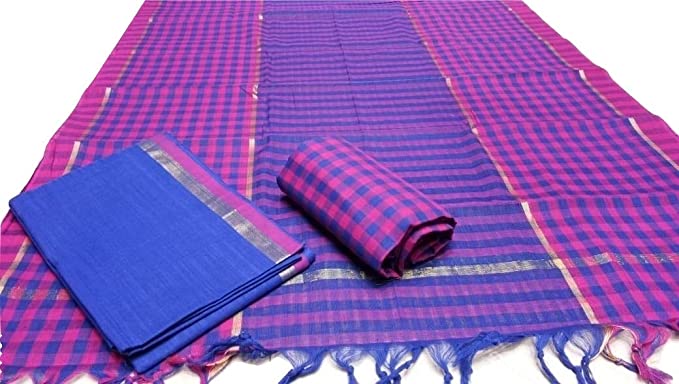
Sizing, also known as street sizing, is the act of applying natural adhesives to stretched warps in order to strengthen and lubricate the yarn. The warp is sized using rice starch, potato starch, or wheat flour. The warps are typically distributed over streets, hence the term street sizing. [Handloom Dresses in India]
#6 – Setting up the warps on the looms
Through heddles and reed, each warp yarn is linked to the front and back beams. Heddles divide the yarn into two halves, while reeds are comb-like structures that space the yarn properly. The warping creates the vertical set of threads, while the weft winding creates the horizontal set of yarns.
#7 – The yarn’s weft winding
The weft yarn is attached to a shuttle (the instrument seen hanging near the weaver’s head). To weave, the weft thread is tossed back and forth between the warp thread.
#8 – Weaving on the loom itself
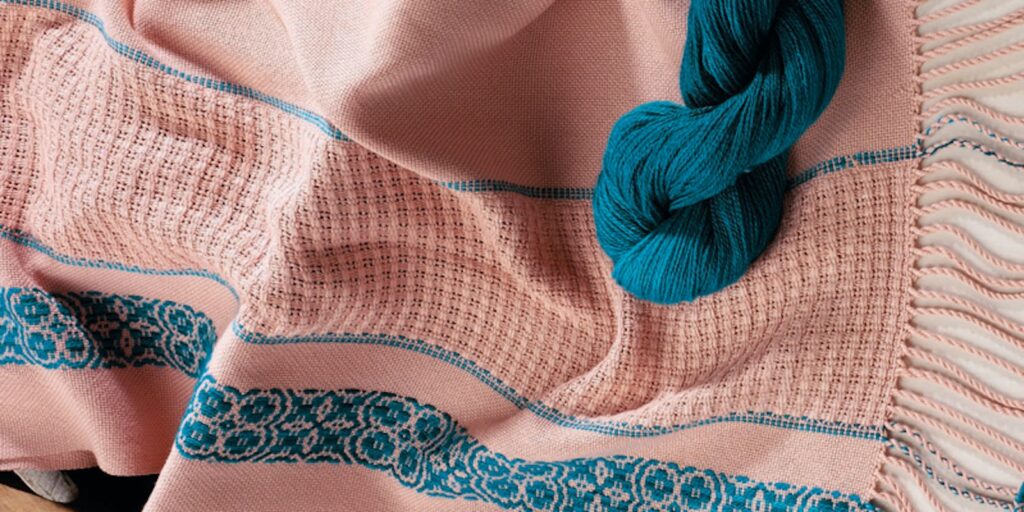
The loom weave is a rhythmic composition comprising a warp and a weft. The feet hit the pedals to warp, and the hands move the weft to allow the heddle to travel through the warp, according to the weave design.
It takes days to weave a fabric on a handloom. It is a difficult task. But it’s all worth it for the finished product of the handloom. [Handloom Dresses in India]

